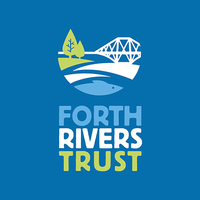Many thanks to
Memsstar Ltd for facilitating this camera's location and to
The Forth Rivers Trust &
West Lothian Council for capitally funding this camera. Kirkton weir was built to supply water to the mill ponds at Livingston mill, now part of the
Almond Valley Heritage Centre. Originally, the mill was used for grinding oats and corn while a smaller waterwheel, built in 1880, powered a butter churn.The mill stopped operating in the 1940s. The weir is a two-metre-high structure and a considerable barrier to fish migration. The construction of the new larinier fish pass, completed in 2018 as part of the Almond barriers project, will allow trout and salmon to access spawning grounds further upstream.
Click here to find out more about the Almond barriers project and the wider RiverLife: Almond & Avon project. The River Almond (Scottish Gaelic: Abhainn Amain) is a watercourse located in Lothian. Spanning approximately 28 miles (45 km), it originates from Hirst Hill in Lanarkshire, near Shotts. Flowing through West Lothian, it eventually empties into the Firth of Forth at Cramond, Edinburgh. The name "Almond/Amon" originates from ancient Celtic, simply meaning "river." Commencing its journey at Hirst Hill near Shotts in Lanarkshire, the river passes Seafield, Kirkton, and the center of Livingston. It continues through Almondell and Calderwood Country Park, where it converges with the Calder and Murieston waters. A weir along its course provides water for a feeder culvert that supplies the Union Canal. Due to the difference in elevation, the feeder must travel eastward for several miles before reaching the canal. By following paths through the country park and private land to the east, one can trace the river and feeder all the way to the Union Canal. Subsequently, the river flows east under the Almond Aqueduct of the Union Canal before turning northwards towards the Firth of Forth. It passes by Kirkliston and Cramond, ultimately joining the Firth of Forth near Cramond Island.The River Almond traverses areas that were formerly dominated by heavy industry, shale mining, and coal mining throughout much of the 20th century. As a result, the river has long been notorious for its elevated pollution levels. However, with the decline of mining and heavy industry in Central Scotland, the river has become cleaner over time. Efforts to restore wildlife populations are underway, with a healthy population of brown trout and improving numbers of Atlantic salmon (Salmo salar) and sea trout (Salmo trutta) returning to the river. The riverbanks also host a diverse range of bird species, including dippers, kingfishers, and grey herons. There have been increasing reports of otters in the area as well. Despite these positive developments, the river still serves as the primary conduit for transporting wastewater from southern West Lothian to the sea. While the introduction of water treatment plants has helped mitigate pollution, the river continues to face challenges such as high levels of detergent pollution and runoff from agricultural land. As a result, the river often emits a distinct "chemical odor," particularly noticeable in the section running through Almondell and Calderwood Country Park, where a significant outfall from the nearby East Calder treatment plant is situated.
Fishing on the lower Almond is managed by Cramond Angling Club, which leases the rights from the Crown Estate. Day and season tickets are available for anglers. Historically, a small passenger ferry operated at the mouth of the Almond in Cramond. In 1997, the ferryman discovered the Cramond Lioness, a Roman-era sculpture, in the river bed mud. The sculpture is now on display at the Museum of Scotland in Edinburgh.






